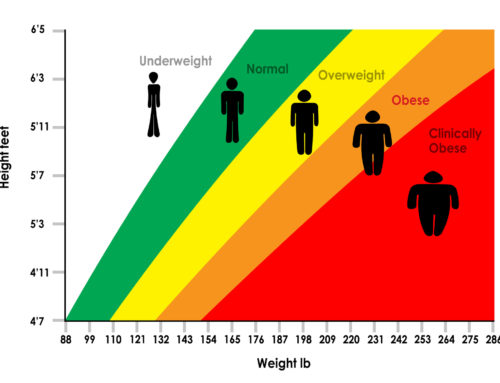 Recently, there was a terrible accident at the 2014 OC Throwdown Competition. Kevin Ogar, a seasoned crossFit athlete, was performing a snatch lift and suffered a spinal injury that severed the spinal cord. At the time of this blog, he is paralyzed from the waist down. You can find out more about Kevin and his foundation here, http://kevinogar.com.
Recently, there was a terrible accident at the 2014 OC Throwdown Competition. Kevin Ogar, a seasoned crossFit athlete, was performing a snatch lift and suffered a spinal injury that severed the spinal cord. At the time of this blog, he is paralyzed from the waist down. You can find out more about Kevin and his foundation here, http://kevinogar.com.
Why do I mention this incident? Because since Kevin’s injury, the blogs, social media forums, etc…have been off the chain with opinions as to the safety of CF, Kevin’s injury in particular and what should be done about it. I will not go into a discussion about what needs to be done in the future, but I will discuss the mechanism of Kevin’s injury and my opinion. I would also like to reference a website that has given a similar opinion. www.physiodetective.com
After reviewing the video available on the internet, it appears that Kevin pulls the weight from the floor with ease, develops triple extension, receives the bar in a squat, locks out his arms, and then does something that I would have not expected to see. As he starts to extend out of the squat and stand, his head drops down, his hips slightly adduct as if he has experienced a disruption on spinal stability, and that is when he drops the bar.
My opinion is that he most likely had some type of spinal fracture, spondylolisthesis or previous pathological condition and the snatch just created the load at the wrong time, wrong place that was the preverbal straw. The implication is that he had some underlying medical condition that his competitive activities brought to the surface.
In relationship to the safety and risk of crossFit, the statistics that we have thus far report that crossFit is no more risky than weightlifting, power lifting, and gymnastics but lower than competitive contact sports such as rugby. Researchers found an injury rate of 3.1 per 1000 hours trained. http://www.ncbi.nlm.nih.gov/pubmed/24276294
When I received my Level 1 CF Trainer Certification 5 years ago, safety, consistency then intensity was one of the foundational mantras taught throughout the seminar. Have we strayed too far from that standard? With all of the independent competitions is safety not as prioritized as needed? Anecdotally, I have witnessed that when you take weightlifting and use it out of its original context, and gymnastics and bastardize movement form, injuries happen. When you combine speed, heavy loads, and poor form, and fatigue, injuries happen.
I get it that the experienced, well conditioned and elite athlete can sometimes get away with compromised form and the misuse of the foundational sports original intent, but to the less experienced, average athlete (which probably represents a large percentage of the member population in crossFit boxes), this can lead to injury and a shortened crossFit sporting experience. We normally don’t see these athletes get injured, recover and return. They just quietly disappear, and I hate that!
What do we do to support less risk and injury? First of all recognize that you are in a risky sport if you are crossFitting. But, you could be participating in a higher risk contact sport. Second, the way most boxes program training is not sustainable. Be careful where you train and use your brain! Always focus on safety, consistency and then intensity, in that order. Seek the advice of a crossFit athlete that has been in the game for 5 years or more and still performing and living a healthy life, and listen to the evidence and not just opinion.
Sustainable….
Coach D




It would be nice to really know what caused Ogar’s accident. The idea that “he most likely had some type of spinal fracture, spondylolisthesis or previous pathological condition” is wrong, though. People with previous spinal fractures or spondylolisthesis don’t go around doing crossfit and attempting snatches at competition. It’s impossible to believe that this guy had a back condition that serious. My husband has spondylolisthesis, with 3 titanium rods in his back. It’s a condition that manifests with extreme back pain at a young age and it’s sometimes coupled with scoliosis. Without the rods, there’s no way anyone with this condition would be attempting snatches and no way someone would be walking around without at least knowing they had a back problem. And with the rods, snatches with any significant weight would be painful. You’re suggesting Ogar knew about some sort of condition and was being stupid about it. Not fair.
CPearl, thank you for your comments. First of all let me say that I in no way suggested that Kevin knew he was injured and competed “stupidly.” But it is not uncommon for high caliber, elite athletes to compete when injured. Second, my background is as a Doctor of Physical Therapy and APTA certified Orthopedic Specialist with 25 years of clinical experiences and having treated over 20,000 patients and hundreds with this condition you spoke of, spondylolisthesis. I think it is important to understand that this condition has three etiological origins; congenital, traumatic, or due to an underlying metabolic disorder or condition. Many, and I’ll say most, don’t even know they have this condition unless they have had a thorough work up by a physician due to back pain or by coincidence. There are 4 grades of this condition, grade 1(0-25%), 2(25-50%), 3(50-75%), and 4(75%-100%). These percentages pertain to the amount of “slippage” of the vertebral segment in question. It can also be a retrolisthesis or anterolisthesis condition. It is unfortunate that your husband had a severe form of this condition, but the large majority of these patients don’t even know they have it unless they begin to have back pain. Most, even write it off as normal training pain if their an athlete and it occurs during or after training. I have treated athletes from the ranks of the amateurs to the professionals who have had this condition. Many who go back to play their chosen sport if it is less severe. Also, I have seen athletes play at a high level within their sport and have this condition. Obviously, contact and jumping sports are a problem for this condition. The impact in loading can cause further damage, but individuals can live a very healthy life with this condition. Also, this condition is not more commonly found in scoliotic patients than other non-scoliotic patients. I don’t know for certain whether Kevin had this condition or not, but that is not the point of this blog. The point of this blog was to help athletes understand that anytime we train at the level that we do, there is risk. But we must train with a smart mind, an open eye and a sense of self awareness and a sustainable thought.
Coach D